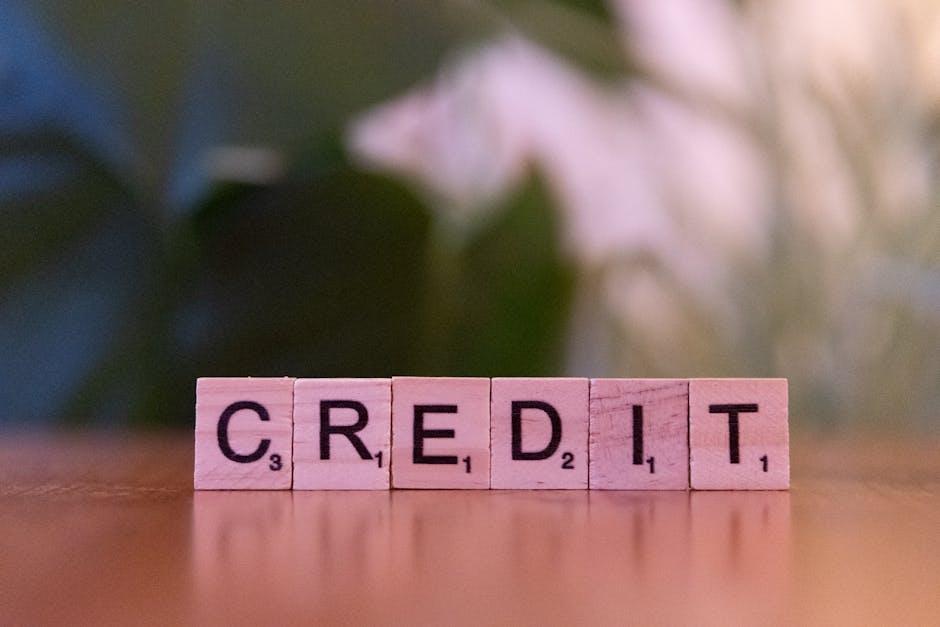In today’s fast-paced world, managing multiple credit card debts can feel like navigating a financial labyrinth. Each month, the burden of high-interest rates and varying due dates can add unnecessary stress to our lives. However, consolidating credit card debt doesn’t have to be an overwhelming process. In fact, with the right strategies, you can simplify your finances fee-free. This article will explore effective tips to help you streamline your debts, save money, and regain control of your financial future-all without the added expense of consolidation fees. Embrace this opportunity to turn your debt into a manageable plan and take a confident step toward financial freedom.
Understanding the Basics of Credit Card Debt Consolidation
Credit card debt consolidation is a popular strategy among individuals seeking to simplify their finances and reduce monthly payments. This process involves combining multiple credit card debts into a single loan or payment plan, often with a lower interest rate. Here’s what you need to know to understand the basics.
What is Credit Card Debt Consolidation?
At its core, credit card debt consolidation is about streamlining your debts. Instead of juggling various payments with different due dates and interest rates, you can merge them into one manageable loan. This approach not only simplifies your financial life but can also save you money in interest payments.
Benefits of Consolidation:
- Lower Interest Rates: Many consolidation loans offer lower interest rates compared to credit cards, making it easier to pay off debt faster.
- Single Monthly Payment: Keep track of just one payment each month, reducing stress and the chance of missing payments.
- Improved Credit Score: Reducing credit card balances can positively impact your credit utilization ratio, potentially boosting your credit score.
- Counseling Services: Many consolidation options come with financial counseling, helping you develop better spending habits.
How to Consolidate Debt:
- Assess Your Debt: List all your credit card debts, including balances and interest rates, to understand the total amount you need to consolidate.
- Research Options: Explore different consolidation methods such as personal loans, balance transfer credit cards, or home equity loans.
- Choose a Lender: Look for reputable lenders, such as banks or credit unions, that offer favorable terms and no hidden fees.
- Apply for Consolidation: Submit an application and provide necessary documents like income verification and credit history.
- Pay Off Debts: Once approved, use the funds to pay off your existing credit cards, thereby consolidating your debts.
- Create a New Payment Plan: Adhere to a budget that allows you to steadily pay off the consolidated loan.
Potential Drawbacks:
- Fees and Penalties: Some loans may have origination fees or require you to pay off your existing credit cards within a certain timeframe.
- Risk of Accumulating More Debt: Without proper financial behavior, there’s a chance you could rack up new debt on credit cards you’ve just paid off.
Conclusion:
Understanding credit card debt consolidation is key to managing your finances effectively. Whether you choose to go with a personal loan or a balance transfer card, it’s essential to evaluate your options carefully, adhere to a strict payment plan, and maintain disciplined spending habits.

Identifying the Right Strategies for Fee-Free Consolidation
When aiming for fee-free credit card debt consolidation, it’s essential to adopt strategies that minimize costs while making the debt repayment process simpler. By leveraging various resources and financial options, you can effectively consolidate your debt without incurring additional fees.
- Balance Transfer Credit Cards: Look for credit cards that offer 0% introductory APR on balance transfers. By transferring your existing credit card debt to one of these cards, you can save on interest for a designated period.
- Personal Loans from Credit Unions: Many credit unions offer personal loans with lower interest rates and fewer fees than traditional banks. Check the terms to ensure there are no hidden fees.
- Debt Management Plans: Non-profit credit counseling agencies can set up a debt management plan (DMP) that allows you to consolidate your debts. These plans often come with little to no fees, but it’s crucial to choose a reputable agency.
- Home Equity Loans: If you own a home, a home equity loan or line of credit (HELOC) can provide a low-interest method of consolidating debt. Just be cautious about the risks involved, as your home is collateral.
When choosing which strategy to pursue, consider the following factors:
| Strategy | Potential Benefits | Considerations |
|---|---|---|
| Balance Transfer Credit Cards | 0% Interest for a limited time | Make sure to pay off the balance before the introductory period ends. |
| Personal Loans | Fixed repayment terms | Check for origination fees and loan amounts. |
| Debt Management Plans | Lower monthly payments | Coordination with creditors; impact on credit score. |
| Home Equity Loans | Lower interest than unsecured loans | Risk of losing your home if unable to repay. |
Additionally, maintaining a good credit score will significantly enhance your financing options. Regularly check your credit report for any inaccuracies, and ensure timely payments on all existing debts. This not only helps you secure better terms but also qualifies you for more fee-free solutions that may arise.

Exploring Alternative Solutions to Manage Your Debt
When facing overwhelming credit card debt, it’s vital to explore alternative solutions that can ease your financial burden without incurring additional fees. Here are some effective strategies that can help you manage and potentially eliminate your debt more efficiently:
- Balance Transfers: Many credit card companies offer enticing balance transfer promotions, often with low or zero interest for an initial period. Consider transferring high-interest balances to a card that offers these perks to save on interest fees. Be sure to read the terms carefully; you generally need to complete the transfer within a specific timeframe.
- Debt Snowball Method: This strategy focuses on paying off smaller debts first while making minimum payments on larger debts. The psychological boost from eliminating smaller debts can motivate you to continue tackling larger balances, improving your overall financial health.
- Debt Avalanche Method: Unlike the snowball method, this approach prioritizes debts with the highest interest rates. By paying these first, you minimize the amount you spend on interest over time. Both strategies ultimately aim to reduce your total debt burden, so choose the one that resonates more with your personal finance style.
- Credit Counseling: Non-profit credit counseling services can help you develop a personalized debt management plan. These professionals can negotiate lower interest rates with creditors and assist in budgeting effectively, often at little or no cost to you.
- Personal Loans for Debt Consolidation: A personal loan with a lower interest rate than your existing credit cards can enable you to consolidate your debt into a single payment. This not only simplifies your monthly budget but can also save you money in interest over time.
- Negotiate with Creditors: Directly contacting your credit card companies may yield surprising results. Many lenders are willing to negotiate payment terms, including lower interest rates or settlement amounts, especially if you’re facing financial hardship.
For a better understanding of how to implement these strategies effectively, consider the following table summarizing the pros and cons:
| Method | Pros | Cons |
|---|---|---|
| Balance Transfer | Low or no interest fees for a period | Transfer fees may apply, and high rates may resume afterward |
| Debt Snowball | Motivating; quick wins | May not save as much in interest |
| Debt Avalanche | Minimizes interest payments | Longer payoff time for smaller debts |
| Credit Counseling | Professional assistance; personalized plans | Potentially limited results; may require cooperation |
| Personal Loans | Simplified payments; often lower rates | Requires good credit; potential for additional debt |
| Negotiate with Creditors | Directly reduces debt | May affect credit score; requires persistence |
By leveraging these alternative solutions, you can regain control over your financial situation and work your way towards a debt-free future. Each option has its own set of advantages and trade-offs, so it’s essential to choose the method that best aligns with your financial goals and lifestyle.

Maximizing Your Savings with Smart Financial Practices
Maximizing your savings while managing credit card debt is crucial for financial health. Here are some smart practices that will help you save more effectively while you consolidate your credit card debt fee-free.
- Utilize a 0% APR Balance Transfer Card: Transferring your high-interest credit card balances to a card with a 0% introductory APR can significantly reduce the amount of interest you pay, allowing you to pay down your debt faster.
- Develop a Budget: Create a budget that accounts for all your income and expenses. By identifying areas to cut back, you can allocate more funds towards savings and debt repayment.
- Set Up Automatic Transfers: Make saving effortless by setting up automatic transfers to your savings account every payday. Even small contributions can add up over time.
- Leverage High-Interest Savings Accounts: Consider moving your savings to a high-interest account, such as those offered by online banks, to earn more interest on your savings.
- Review and Adjust Insurance Policies: Regularly evaluate your insurance plans to ensure you aren’t overpaying. This can free up extra cash for savings or debt repayment.
| Bank/Provider | Account Type | Interest Rate |
|---|---|---|
| American Express | High-Interest Savings Account | 3.50% |
| Ally Bank | No-Penalty CD | 3.00% |
| Marcus by Goldman Sachs | Online Savings Account | 3.40% |
Consider Credit Counseling: If you’re feeling overwhelmed, don’t hesitate to seek help from nonprofit credit counseling agencies. They can provide valuable advice and help create a personalized plan for managing your debt and maximizing savings.
Focus on Extra Income: Explore side jobs or freelance opportunities to increase your income. Direct this additional money towards savings or paying off debt to boost your financial stability.

Concluding Remarks
In conclusion, navigating the path to consolidating your credit card debt can feel overwhelming, but with these straightforward, fee-free tips, you can take control of your financial future. Remember, the journey to financial freedom starts with a single step-whether that’s assessing your current debts, exploring balance transfer options, or negotiating with your creditors. By adopting smart strategies and remaining diligent, you can simplify your payments and reduce stress. As you embark on this journey, stay focused on your goals, and celebrate each milestone along the way. Your brighter financial future awaits!














